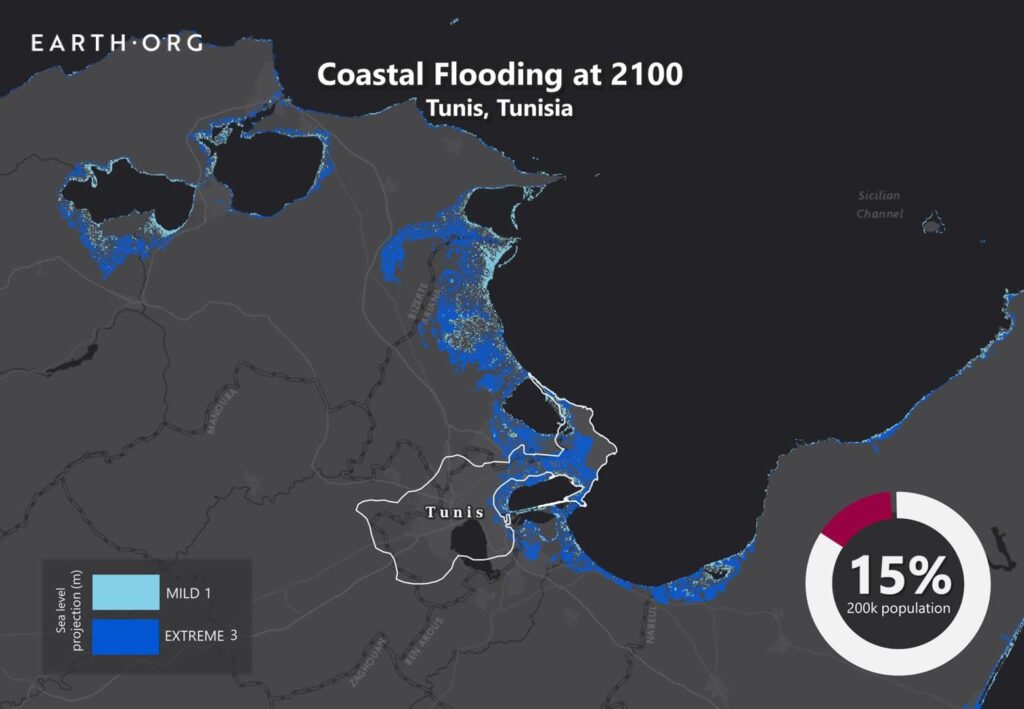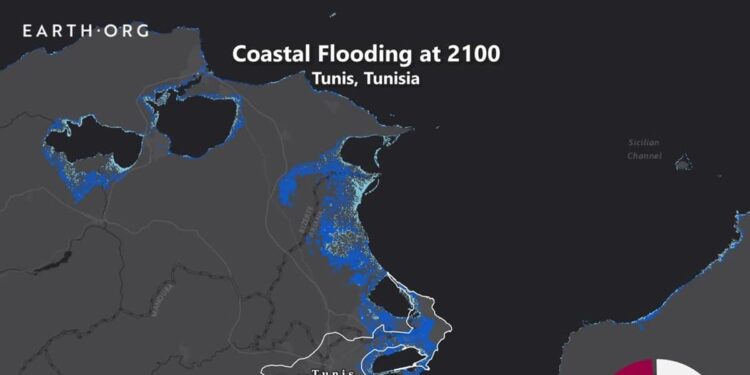The environment in environment and in climate Hamdi Hached has relayed a simulation ofEarth.org showing the impact of the rise of waters in Tunisia on the horizon 2100. Depending on the scenarios, between 1 and 3 meters of elevation of the sea level could directly affect the coast of the Grand Tunis, with repercussions on the habitat, the economy and the environment.
Potentially exposed whole areas
The published data indicate that several localities in the north and southern capital would be concerned. To the north: Raoued, Gammarth-Plage, La Marsa, but also Kalaat El Andalous, Aousja and Zouaouine in the governorate of Bizerte. To the south: Borj Cedria, Hammam Chatt and entire districts of the South suburbs.
According to Hamdi Hachad, this would represent almost 15% of the population of Greater Tunis, or about 200,000 inhabitants threatened by a risk of flooding or travel.
The impact would not be limited to housing and infrastructure. Coastal ecosystems, such as Lac de Tunis and the Sebkha of Ariana, are among the fragile areas. Economic losses could be significant for sectors such as tourism, real estate and fishing, while displacement of populations from the coastal areas could accentuate pressure on the interior neighborhoods.


An already visible trend on Tunisian beaches
For several years, phenomena of erosion and decline in the coastline have been observed on different Tunisian beaches. Climate change and the rise in temperatures, which accelerate the melting of ice, play a decisive role, but the anarchic urbanization of the coastlines also contributes to accentuating the problem.








